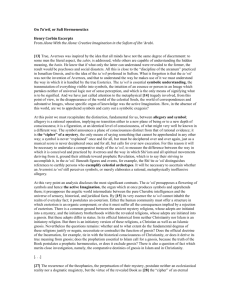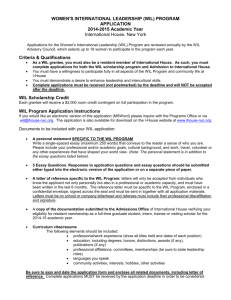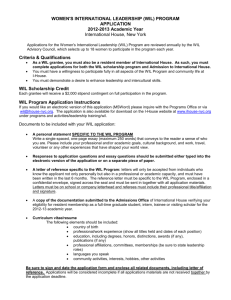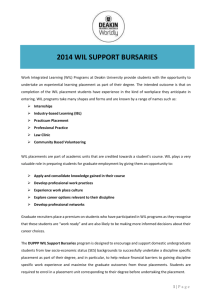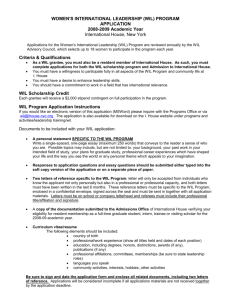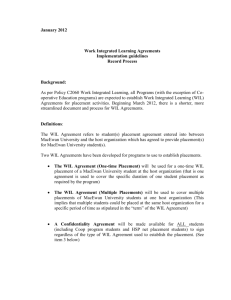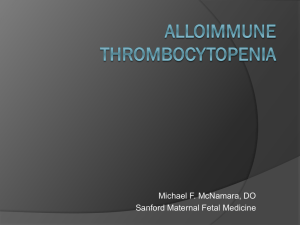WIL Program overview
advertisement
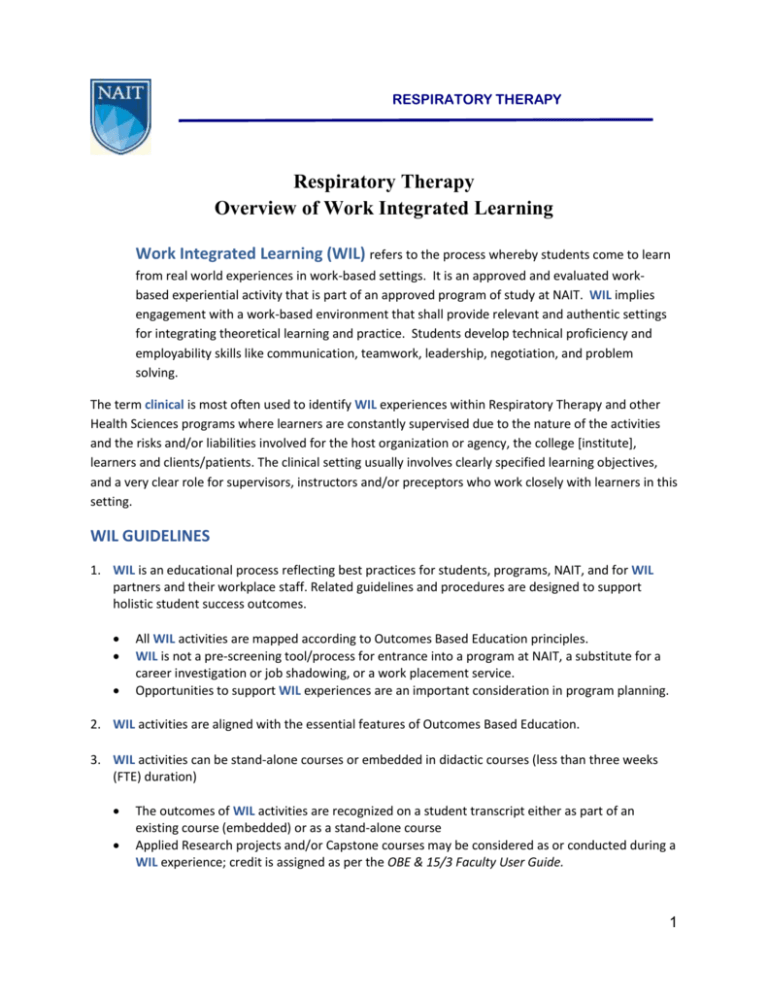
RESPIRATORY THERAPY Respiratory Therapy Overview of Work Integrated Learning Work Integrated Learning (WIL) refers to the process whereby students come to learn from real world experiences in work-based settings. It is an approved and evaluated workbased experiential activity that is part of an approved program of study at NAIT. WIL implies engagement with a work-based environment that shall provide relevant and authentic settings for integrating theoretical learning and practice. Students develop technical proficiency and employability skills like communication, teamwork, leadership, negotiation, and problem solving. The term clinical is most often used to identify WIL experiences within Respiratory Therapy and other Health Sciences programs where learners are constantly supervised due to the nature of the activities and the risks and/or liabilities involved for the host organization or agency, the college [institute], learners and clients/patients. The clinical setting usually involves clearly specified learning objectives, and a very clear role for supervisors, instructors and/or preceptors who work closely with learners in this setting. WIL GUIDELINES 1. WIL is an educational process reflecting best practices for students, programs, NAIT, and for WIL partners and their workplace staff. Related guidelines and procedures are designed to support holistic student success outcomes. All WIL activities are mapped according to Outcomes Based Education principles. WIL is not a pre-screening tool/process for entrance into a program at NAIT, a substitute for a career investigation or job shadowing, or a work placement service. Opportunities to support WIL experiences are an important consideration in program planning. 2. WIL activities are aligned with the essential features of Outcomes Based Education. 3. WIL activities can be stand-alone courses or embedded in didactic courses (less than three weeks (FTE) duration) The outcomes of WIL activities are recognized on a student transcript either as part of an existing course (embedded) or as a stand-alone course Applied Research projects and/or Capstone courses may be considered as or conducted during a WIL experience; credit is assigned as per the OBE & 15/3 Faculty User Guide. 1 WIL activities may be credit or non-credit. 4. Oversight, coordination, and legal accountability for NAIT students on WIL placements are governed by NAIT’s policies, guidelines and processes. WIL experiences are coordinated by NAIT. Students participating in WIL activities must follow NAIT Academic Procedures and Regulations as well as any relevant partner site policies and guidelines. Prior to placement, NAIT and the employer/host organization (and student in some cases) shall sign a NAIT approved legal agreement through NAIT’s legal office. NAIT monitors the WIL activity/experience with varying degrees of NAIT faculty or delegated involvement in alignment with the requirements of the WIL activity. NAIT supports the recruitment and placement activities of the employers. NAIT is responsible for the student on a WIL placement; any appeals would follow NAIT’s appeal process RESPIRATORY THERAPY WIL COMPONENTS A WIL experience for the Respiratory Therapy students occurs in each of the 3 years of the program. Below is a brief outline and comparison of WIL from 1st through 3rd year of the Respiratory Therapy program: YEAR ONE 2 week clinical rotation in spring (term 2) Mostly an observation experience where students are exposed to a broad range of clinical environments in acute and critical care, in all patient age groups. Students attend 2 different clinical sites, and may rotate through different clinical areas within each site No performance evaluation is required, and there is no competency requirements Students will require constant supervision, and are not permitted to perform any invasive procedures 2 YEAR TWO 4 week clinical experience in spring (term 4) Exposure to adult patient population in a non-critical care environment. Students will attend an adult wards type experience for 2 weeks, as well as 2 weeks in either of: o Pulmonary Functions o Seep diagnostics and asthma/COPD education o Community Care Clinical objectives define expectations for each of the clinical rotations Clinical simulation occurs prior to the start of clinical rotations to optimize student preparedness Student will practice, and be evaluated on competencies Students will be evaluated on overall performance in each clinical rotation. Supervision from preceptors may be variable as students develop the ability to perform more independently. (See Supervision Guidelines) YEAR THREE 28 weeks of clinical experience occurring in term 5 and 6 Exposure to a broad range of clinical environments Students will attend the following clinical rotations o Adult Intensive Care o Adult General Wards o Emergency Room o Pulmonary Function Testing o Sleep Diagnostics o Asthma/COPD Education o Community Care o Operating Room o Neonatal ICU o Labor & Delivery o Pediatric Wards o Pediatric Intensive Care Clinical objectives define expectations for each of the clinical rotations Clinical simulation occurs at multiple times in the year prior to specific clinical rotations to optimize student preparedness Students will practice and be evaluated on competencies Students will be evaluated on overall performance in each clinical rotation. Supervision from preceptors may be variable as students develop the ability to perform more independently. (See Supervision Guidelines) 3
